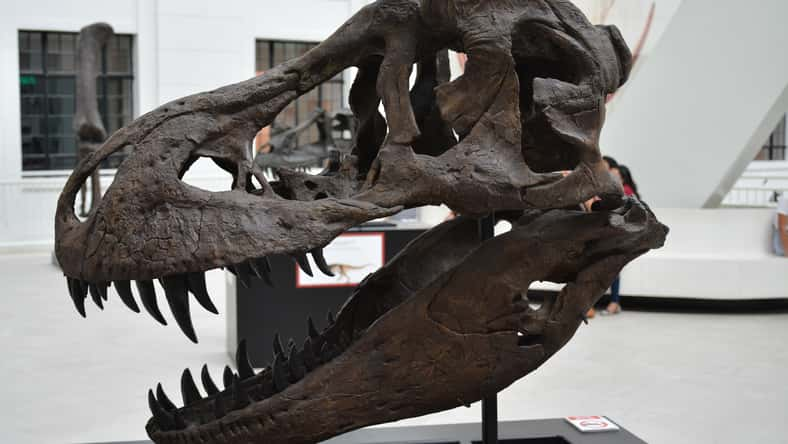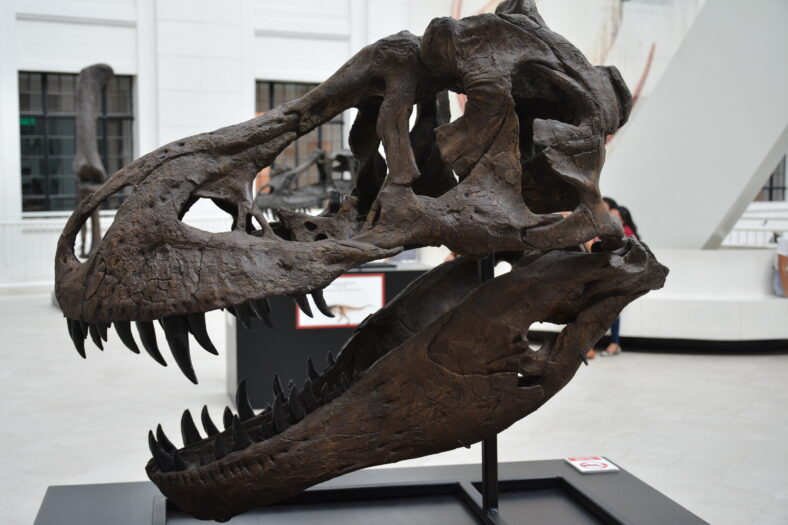Skulls Show Why Some Dinosaurs Shredded Flesh While Others Crushed Bone

An analysis of the fossilized skulls of the largest predatory dinosaurs in the world has revealed differences in their hunting strategies. Some species preferred to shred through their prey’s flesh, while others liked to attack with bone-crushing bites.
Researchers from the University of Bristol in the United Kingdom studied the skulls of 18 species of theropods from across the Mesozoic Era.
This group of dinosaurs was very diverse and included Tyrannosaurus rex, Giganotosaurus, and Spinosaurus. These predators all walked on their hind legs and had large heads filled with big, sharp teeth. However, their teeth were not identical to each other.
According to Eric Snively from Oklahoma State University, the Giganotosaurus had thin, serrated teeth that cut through flesh with ease. He compared its teeth to those of a great white shark and a Komodo dragon.
Meanwhile, the Spinosaurus had teeth like a crocodile’s. Since it was semi-aquatic, it was built for catching prey in the water rather than on land.
The research team took high-resolution 3D scans of the surface of the skulls and analyzed the dinosaurs’ bite mechanics.
They compared the dinosaurs to modern relatives, such as birds and crocodiles, discovering that Giganotosaurus and Spinosaurus had a weaker bite than the Tyrannosaurus.
The T. rex had a shorter and thicker skull, allowing it to attack prey with a bite powerful enough to crush bones and access the marrow. The species’ strong bite put more stress on their skulls than previously thought.
“The feeding strategies of these top predators are more complex than we thought in the past,” said Fion Waisum Ma from the Beipiao Pterosaur Museum of China. “T-rex lived later during the Late Cretaceous period when hunting was highly competitive.”

Sign up for Chip Chick’s newsletter and get stories like this delivered to your inbox.
The competition may have driven it to develop a unique feeding strategy. Some smaller theropods also experienced greater skull stress due to increased muscle volume and bite force. This showed that skull stress was not always related to size.
The findings demonstrated that even among ancient predators that lived long ago, feeding behaviors and skull structures varied widely across species.
“Tyrannosaurs evolved skulls built for strength and crushing bites, while other lineages had comparatively weaker but more specialized skulls, suggesting a diversity of feeding strategies even at massive sizes,” said Andrew Rowe at the University of Bristol.
Evolution led carnivorous dinosaurs onto different paths as they grew into giants. There was no singular skull design that was the best for being a predatory giant. Several designs worked well.
Of course, there are no living examples of these massive meat-eaters since the last of them died during the mass extinction at the end of the Cretaceous.
So, studying the fossils left behind offers rare insights into a way of life that has ceased to exist for millions of years.
The details of the study were published in the journal Current Biology.
More About:News





